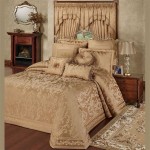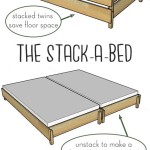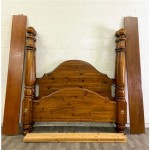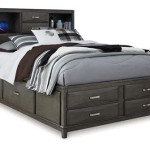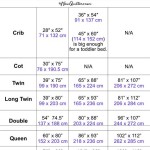What Is a Four-Poster Bed Canopy Called in English?
Four-poster beds, with their stately presence and elegant design, have been a mainstay in bedrooms for centuries. Often associated with grandeur and luxury, they offer a sense of privacy and seclusion. While the four posts are a defining feature, the fabric that drapes from them to create an enclosed space is known by several names.
Common Terminology: Canopy, Tester, and Baldachin
The most common term for the fabric covering a four-poster bed is simply "canopy." This term is used broadly to describe any type of fabric draped over a frame, be it a bed, throne, or even a stage. In the context of a four-poster bed, canopy refers to the fabric that forms a roof or enclosure over the bed, providing a sense of privacy and intimacy.
"Tester" is another term frequently used for the canopy of a four-poster bed. While sometimes used interchangeably with "canopy," "tester" specifically refers to the horizontal frame or structure that supports the canopy fabric. Think of it as the "ceiling" of the canopy, while the fabric draped over it constitutes the "roof."
"Baldachin" is a more formal and historically significant term for the canopy. Derived from the Italian word "baldacchino," it originally referred to a canopy used for ceremonial purposes, particularly over altars or thrones. In the context of a four-poster bed, "baldachin" often implies a more elaborate and ornate canopy, often made of rich materials like velvet or silk.
The Evolution of Bed Canopies: Functionality and Aesthetics
Beyond the nomenclature, the design and function of bed canopies have evolved over time. Early canopies were often utilitarian, serving to keep out drafts and insects. They provided a sense of warmth and enclosure, particularly in the colder months. In colder climates, the canopy might even be lined with fur or wool for added insulation.
As society progressed and living standards improved, bed canopies became more elaborate and ornate, reflecting the wealth and status of their owners. Rich fabrics, intricate embroidery, and decorative trims were incorporated. This aesthetic transformation turned the canopy from a functional necessity into a statement piece, adding a touch of elegance and romance to the bedroom.
Modern Interpretations of the Canopy
While traditional four-poster beds with canopies are still popular, especially in elegant bedrooms and historic settings, there has been a resurgence of interest in modern reinterpretations of the canopy. Contemporary designers are experimenting with different materials, textures, and shapes, creating unique and eye-catching designs. Some modern canopies are minimalist, while others feature bold colors, patterns, and dramatic drapes.
Modern canopies often serve a more decorative role, adding a touch of drama and whimsy to the bedroom. They can be used to create a sense of intimacy or to define a particular area within the space. Contemporary canopies may also be used as a focal point, drawing attention to the bed and making it a centerpiece in the room.

Four Poster Bed Wikipedia

The History Of Four Poster Bed Furniture Tudor Oak Blog

The History Of Four Poster Bed Furniture Tudor Oak Blog

The History Of Four Poster Bed Furniture Tudor Oak Blog

Canopy Bed Wikipedia

The History Of Four Poster Bed Furniture Tudor Oak Blog

The History Of Four Poster Bed Furniture Tudor Oak Blog

The Traditional Balmoral Four Poster Bed Handmade In

Four Poster Canopy Bed Handmade Bespoke Solid Oak Beds Tudor

The Ambassador Solid Wood Four Poster Bed Handmade In
